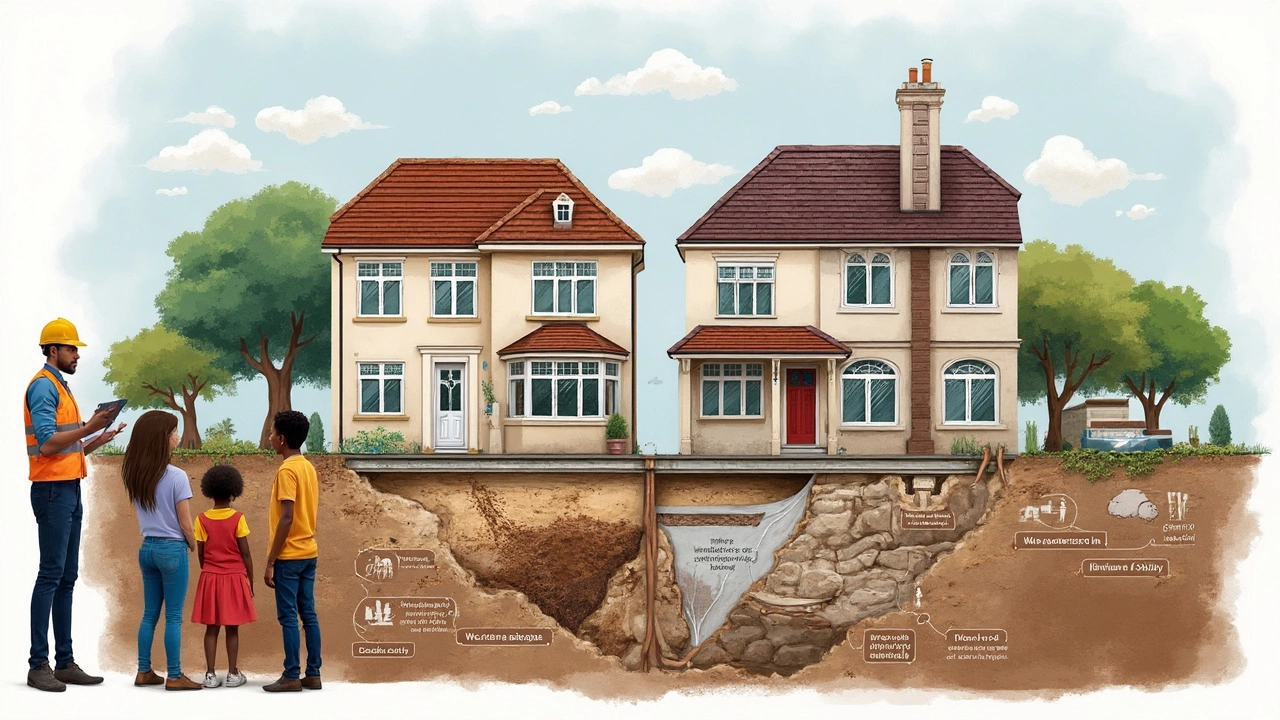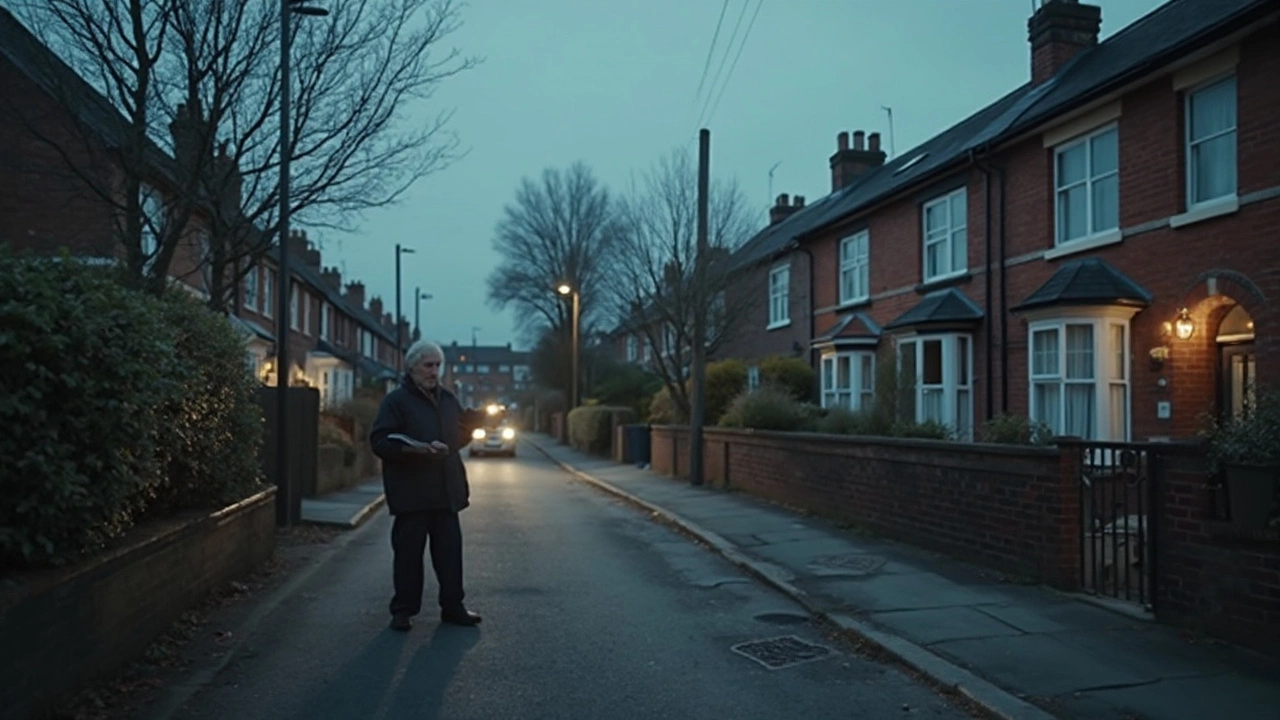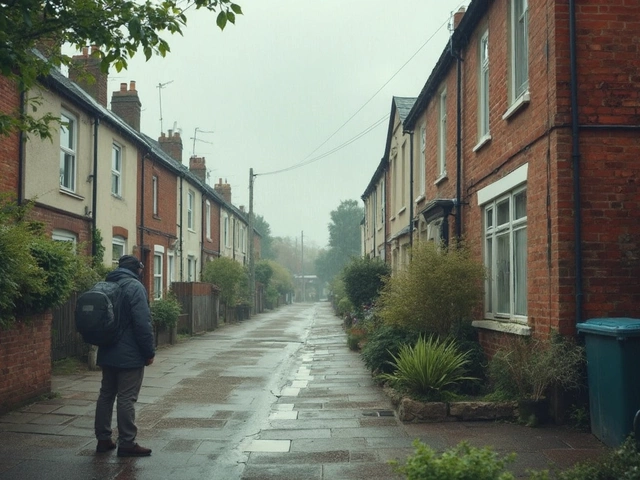Ever looked at a crack in your living room wall and wondered, "Is this a big deal or just another home quirk?" Foundation issues can sneak up on you, and figuring out what counts as major foundation repair can get confusing fast. Not every crack is a crisis, but ignoring the wrong one can lead to headaches that aren’t just cosmetic—they can sink your savings and stress you out for years.
Major foundation repair isn’t about patching a small crack with some spackle. We're talking about real structural problems—stuff that can make doors stick, floors slant, or even threaten your home’s stability. When repairs get major, crews may need to jack up parts of your house, install steel piers, or even dig under your foundation. It’s serious work, usually prompted by big warning signs you shouldn’t ignore.
Knowing the difference between a minor fix and major work can save you both money and stress. I'll walk you through what to look out for, why these repairs matter so much, and how to handle it if you’re facing a big job. Your home’s foundation is like its backbone. If it starts to fail, everything else can be at risk.
- What Defines Major Foundation Repair?
- Causes and Warning Signs
- Common Major Repair Methods
- How Major Repairs Affect Your Home
What Defines Major Foundation Repair?
Let’s get straight to it—major foundation repair covers more than just filling a small crack or touching up a bit of drywall. This is when your house is facing real structural problems that can’t be fixed with quick DIY tricks. If you’re hearing talk of jacking up your house or installing steel piers, you’re probably in major repair territory.
Here’s what actually counts as major work:
- Your foundation has shifted by more than an inch, causing walls or floors to separate, crack, or slope noticeably.
- There are long, horizontal cracks in your foundation walls—these are more worrying than vertical, hairline cracks.
- You spot bowed or leaning basement walls, gaps around window frames, or doors that won’t close because the frames are skewed.
- The repair calls for serious equipment, like hydraulic jacks, steel piers, or the need to excavate the soil around your house.
The major foundation repair jobs almost always require professionals and can take anywhere from a couple of days to a few weeks. These issues, if ignored, can put the safety of your entire home at risk. In worst cases, your house could even become unsafe to live in until repairs are finished.
Take a look at some typical facts that separate the big jobs from the basic fixes:
| Minor Repair | Major Repair |
|---|---|
| Hairline crack fills Under $1,000 | Installation of piers/underpinning $5,000–$20,000+ |
| Small mortar patching | Foundation wall rebuilds |
| No structural shifting | Noticeable wall or floor movement |
| Cosmetic touch up | Full-home stabilization |
To really know if you’re dealing with a major repair, it’s all about the size, depth, and impact of the problem. If the issue is threatening your whole home’s stability or requires heavy machinery, you can be sure you’re looking at something more serious—and probably worth acting on fast.
Causes and Warning Signs
Most people don’t think about their home’s foundation until something goes wrong. The main causes behind major foundation repair usually come down to water, soil, and lousy construction. Changes in moisture are troublemakers—either from heavy rain, poor drainage, or busted plumbing. The soil your house sits on can also shift naturally over time, especially if you live in an area with clay or expansive soil. Sometimes, the builder just took shortcuts and that comes back to bite you years later.
Here's a quick look at the most common causes for big foundation problems:
- Poor drainage around the house (blocked gutters or downspouts dumping water near your foundation)
- Plumbing leaks under the slab
- Tree roots too close, sucking up ground moisture unevenly
- Extreme drought or flooding
- Poor soil compaction during original construction
The warning signs don’t always pop up overnight. Sometimes they start off small, like hairline cracks, then slowly get worse. Here’s what you should really pay attention to:
- Large, zig-zag cracks that go across walls or floors, especially wider than a quarter inch
- Doors and windows that suddenly start sticking or won’t close right
- Noticeable gaps around window frames or exterior doors
- Floors that feel uneven or sloped—sometimes things roll across the floor on their own
- Cracked or separated bricks on the outside of the house
- Visible separation between walls and the ceiling, or between walls and the floor
Not sure if your problems count as major? Repairs that involve piers, underpinning, or structural leveling usually land in the "major" category. Here’s a snapshot that shows why watching out for these warning signs is key:
| Warning Sign | Possible Major Cause | What to Do |
|---|---|---|
| Wide wall cracks (>1/4 inch) | Foundation shifting or sinking | Get a structural inspection |
| Sticking doors/windows | Framing movement | Check for wall movement and call a pro |
| Sloping floors | Soil movement under slab | Professional assessment needed |
| Outside brick cracks | Foundation settlement | Document and monitor changes |
Don’t ignore the signs. Anything tied to your home's backbone—its major foundation repair—deserves a closer look as soon as you notice it. Waiting it out almost always makes things worse and the fix more expensive.

Common Major Repair Methods
When a home's foundation starts acting up, the repairs to get it back in shape aren’t your average weekend projects. These fixes almost always call for pros and some pretty intense tools and know-how. Here’s what you might face if you’re dealing with major foundation repair and not just a hairline crack.
One of the most common solutions for serious settling is underpinning with steel piers. Contractors drive long steel supports deep into the ground beneath your house, anchoring everything to stable soil or even bedrock. Nothing fancy about it, but it works—in fact, this method is used on everything from bungalows to huge office buildings. If your house has started to tilt or sink, piers can lift and support it like rebar in concrete.
Helical piers are another option, basically giant screws twisted into the ground. These can go in fast and are good for lighter structures or areas where there’s a lot of loose or sandy dirt. Then there are concrete piers, which are poured into holes beneath your foundation and allowed to harden before your house is set back down. These work well in some soils, but installation can take longer compared to steel options.
Sometimes the problem isn’t below, but water is getting in from outside, causing the ground to shift or the concrete to rot. Waterproofing and drainage fixes are a big deal here. Crews might install a French drain system or add exterior waterproof barriers to redirect water away from your foundation. If water sits up against your house, you’re just asking for trouble.
For foundations that are bowing or bulging from the side, wall anchors or braces may be installed. These can stabilize the wall and slowly nudge it back into place over time. This is a targeted fix, but it gets expensive if several walls are showing signs of movement.
If you’re wondering about how these repairs stack up in real life, check out this comparison table:
| Repair Method | Best For | Typical Cost Range | Time to Complete |
|---|---|---|---|
| Steel Piers | Heavy homes, deep movement | $8,000–$20,000 | 1–3 weeks |
| Helical Piers | Lighter homes, variable soil | $10,000–$15,000 | 3–7 days |
| Concrete Piers | Stable soils, large homes | $6,000–$14,000 | 2–4 weeks |
| Wall Anchors | Bowing basement walls | $4,000–$12,000 | Several days–2 weeks |
| Drainage/Waterproofing | Water issues, shifting soil | $1,500–$5,000 | 1–5 days |
Costs vary a lot based on where you live, how bad things are, and the size of your house. If your repairs need more than just a patch job, you’ll want to bring in a foundation specialist—with real experience—not just a general contractor. Shop around and look for companies with good reviews and warranties. A foundation fix isn’t where you want to gamble.
How Major Repairs Affect Your Home
Dealing with major foundation repair isn't just about fixing what’s under your house—it actually touches just about everything inside and out. Once you start lifting or stabilizing parts of your foundation, you might notice things shifting, sometimes for the better and sometimes with side effects you need to watch out for.
The biggest change is usually structural. Shoring up a weak foundation can stop doors from sticking and cracks from spreading. It can also keep your floors from slanting any further. But don’t be surprised if some cosmetic damage pops up during the process. As your house settles into its new, more level position, small cracks in drywall or tile can appear. These are normal and usually not a big deal—they’re just part of the adjustment process.
Something people don’t realize: major repairs can mess with your plumbing. If a foundation had shifted for a while, pipes might have bent to fit. Move the house back, and those pipes can crack or leak. Foundation companies often check for this, but after repairs, it’s smart to have a plumber double-check everything.
The cost can catch you off guard, too. Major repairs aren’t cheap and can run anywhere from $10,000 to $40,000 depending on how bad the damage is and the method used. Here’s a quick breakdown of some average costs reported in recent years:
| Repair Method | Average Cost |
|---|---|
| Steel Piers | $10,000 - $25,000 |
| Helical Piers | $15,000 - $30,000 |
| Slabjacking | $8,000 - $18,000 |
| Complete Replacement | $25,000 - $40,000 |
Major foundation repair affects your home’s value and insurance, too. If you get the job done right with a warranty, buyers usually feel more confident about the purchase. You’ll need to keep all your repair paperwork to show what was fixed and how. But if you don’t fix it, expect home inspectors and insurance adjusters to flag the problem, making it harder to sell or keep your rates down.
Here are some practical tips for anyone facing big foundation work:
- Ask the repair company about the warranty and exactly what it covers.
- After repairs, have a plumber inspect your home (especially if you have old drain lines).
- Save all paperwork—including photos—because future buyers and insurers will ask for proof.
- Wait a few months after major repairs before doing final cosmetic fixes inside, so the house can finish settling.
The bottom line? Major foundation repair means more than patching a crack. It reshapes your home’s future, wallet, and even your daily routine for a while. Knowing the facts up front helps you handle the ride a lot better.





